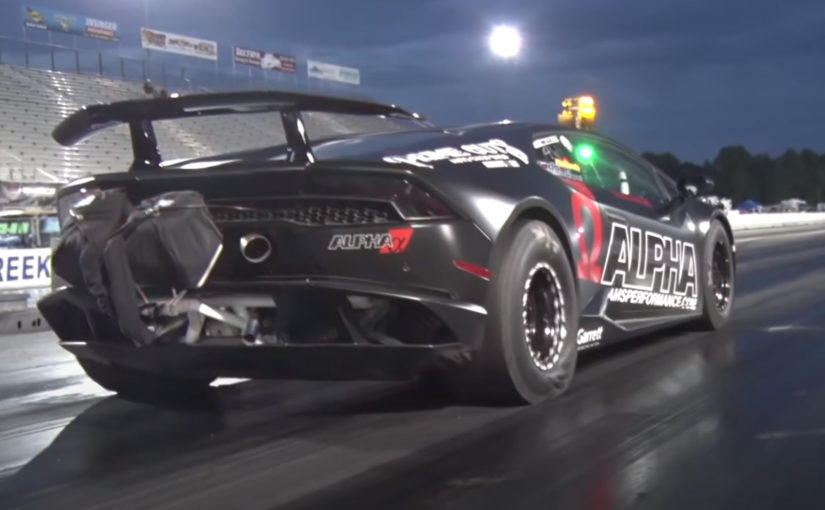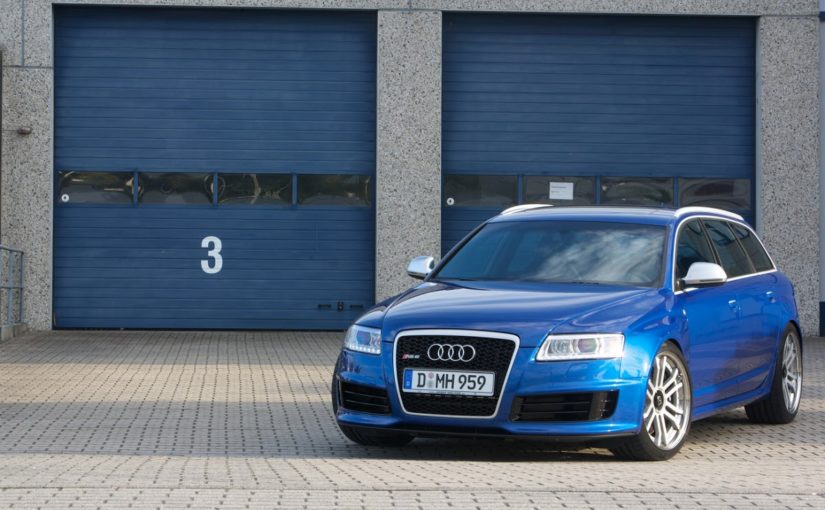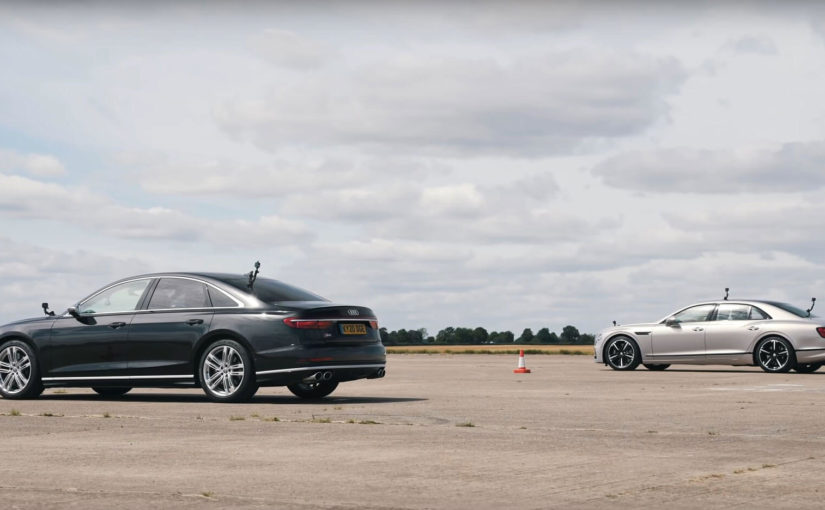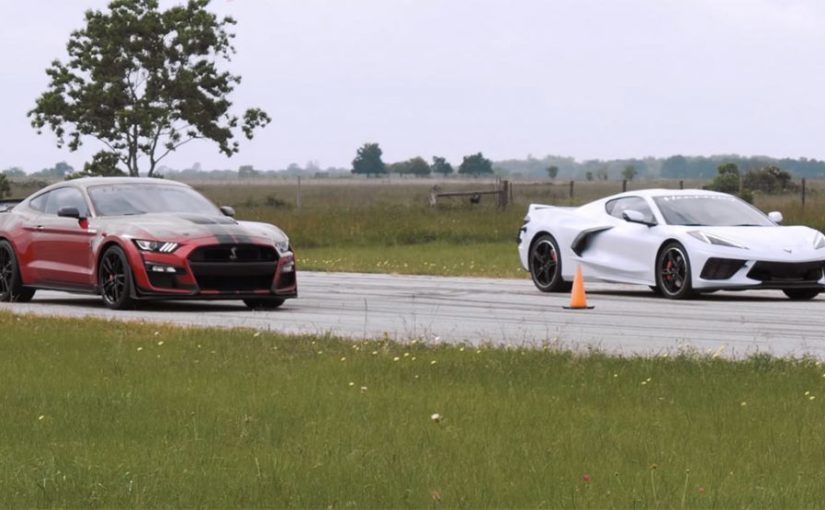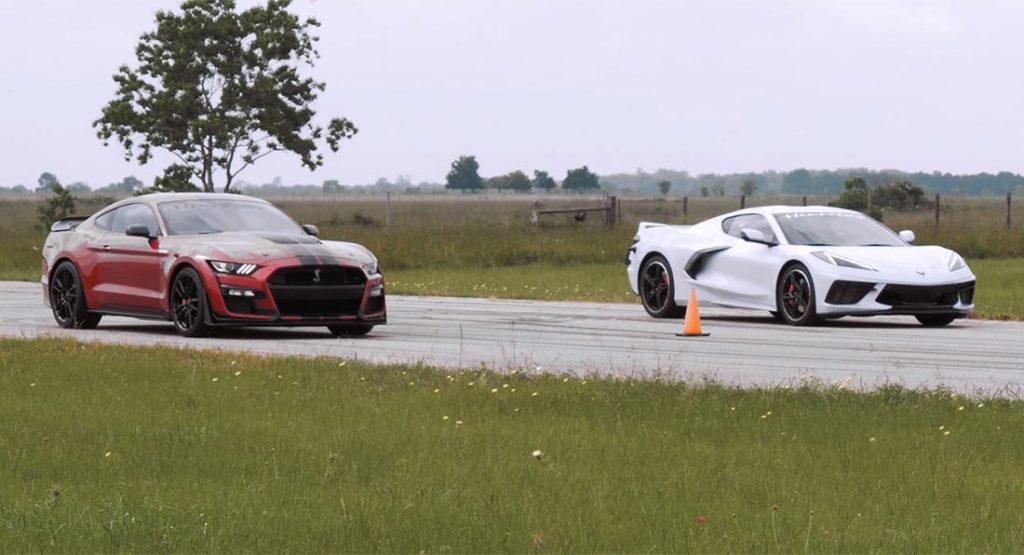Initially considered to be boring but sensible old things that were meant to carry extended families and their luggage, estates (or wagons) have become quite a hot topic over the last couple of decades — not least among the German automakers. Which is why for the best part of the last few decades we’ve been offered Teutonic estate wagons that aren’t just about space and utility. Instead, they’re all about the perfect blend of luxury and performance. You could say they’ve become the ultimate factory sleeper.
To get the perfect essence of what a hot station wagon should be, you need to go no further than the rivalry between Audi, Mercedes, and BMW. Mat Watson from CarWow decided to line-up three 2000s’ super estates, the Audi RS6 C6, the BMW E61 M5, and the Mercedes-Benz E55 AMG, to run the quarter-mile.
To start off, Watson is behind the wheel of the of the RS6. The Audi houses a Lamborghini-derived 5.0-liter twin-turbo V10 producing an impressive 579 hp (587 PS) that is split across all four wheels courtesy of the Quattro all-wheel drive and a six-speed automatic gearbox. The two-tonne machine had a price tag of around £70,000 ($100,000) when it first arrived, but you can source a decent second-hand example in the UK for around £25,000 ($35,000) today.
Watch: In A Straight Line, Can The New Audi S3 Beat The Old RS3?
[embedded content]
Next to Watson’s weapon of choice sits the E61 M5, also accommodating a 5.0-liter engine but in the form of a naturally aspirated V10. The BMW is also lighter at 1.8-tonnes. Output on the M5 is 507 hp (514 PS) with 520 Nm (383 lb-ft) of torque, sent entirely to the rear wheels. Brand new, the M5 also cost between £60,000-£70,000 and retains more or less the same second-hand value as the RS6.
Finally, we come to the Mercedes. The E55’s 5.4-liter V8 boasts a supercharger although, on paper, this car is the weakest in terms of output figures, with “just” 476 hp (482 PS). But with an ace up its sleeve, the Merc can produce a massive 700 Nm (516 lb-ft) of torque, all of which is transferred to the tarmac via a five-speed automatic gearbox. Once again,£60,000-£70,000 bought new from a showroom, but you can find a decent one today for around £15,000.
After a couple of sound checks (which the Bimmer unofficially won), the quarter mile was almost a foregone conclusion. In reality, it took no more than about 20 meters for the Audi to give its competitors a view of its rear end. And even with pro drivers behind the wheel of the E55 and the M5, it couldn’t be questioned that the RS6 was the quickest of the lot. Having said that, the battle for second place was much closer, where the E55 was able to get a hair ahead.
Ultimately, the RS6 proved its all-wheel drive supremacy, completing the standing quarter-mile in 12.5 seconds, while with the prefect launch, the Mercedes was not too far behind, with 13.1 seconds. Finally came the Bimmer, clocking in at 13.9 seconds, hampered by consistently poor starts and a rather lackluster gearbox in the form of BMW’s rather hated SMG transmission.
Compared to the manufacturer times the RS6 performed as expected, being the fastest on paper with a 0-60 mph time in just 3.9 seconds. The M5, when new, was slated to do 0-60 mph in 4.2 seconds, although the race in Carwow’s video seemed to debunk this claim, with the Merc being the least powerful and slowest (4.4 seconds to 60 mph) but consistently bettering the Bavarian.

For GREAT deals on a new or used Toyota check out
Toyota of Las Vegas TODAY!


